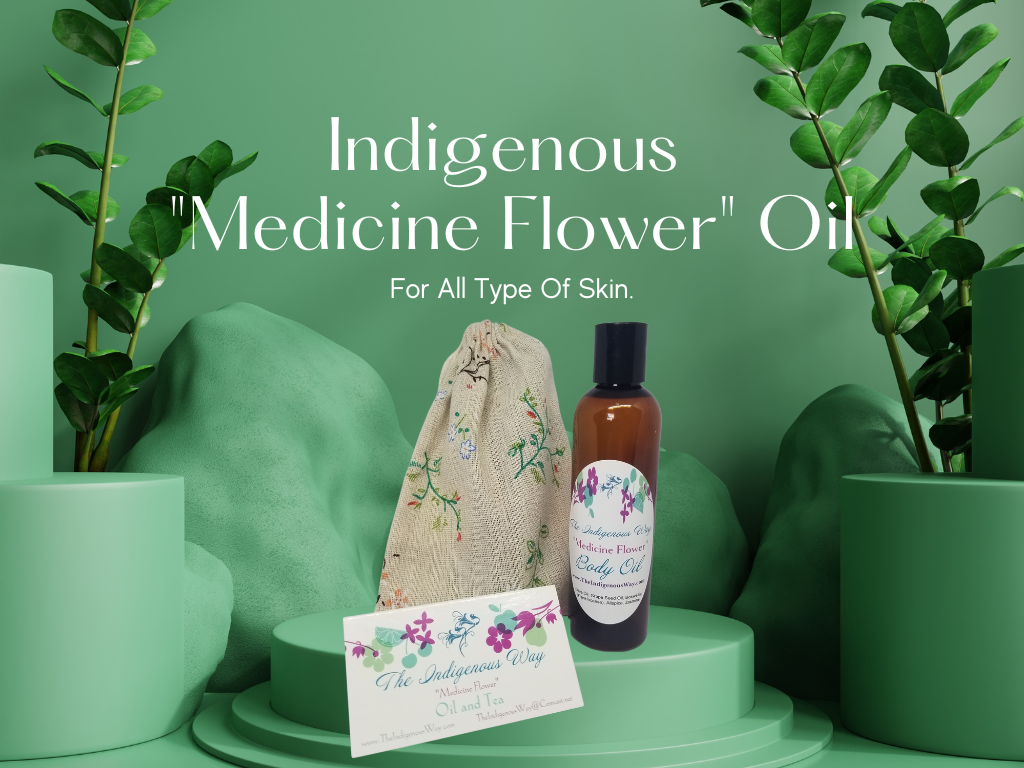|
Eating raw foods is natural. Our bodies thrive on all that is fresh and vital. Raw food consumption (or increasing the amount of raw food that you eat) is bound to bring a feeling of increased wellbeing. Raw food indulgence is based on unprocessed and uncooked plant foods, preferably organic, such as a variety of fresh fruits and vegies, nuts, seeds, grains, dried fruit, fresh juices and purified water. Basically, consuming the raw food promotes eating and drinking ‘living’ foods. Living foods and juices contain the maximum amount of fiber found in raw produce, fiber that can be lost in processing. Such foods are easily metabolized and tend to be lower in calories than the average cooked or process consumption. Heating food above 116°F destroys enzymes in food that aid in digestion and in absorption of food, diminishing its nutritional value. A consumption of at least 75% raw food offers numerous health benefits, such as increased energy, improved skin appearance, better digestion, weight loss and reduced risk of serious illnesses like heart disease, diabetes and cancer. A raw food consumption contains little or no saturated fats, is low in sodium, high in potassium, magnesium, folate and fiber. Raw food indulgence is also an excellent detox. Different combinations of raw, living foods and juices can be used for colon cleansing, liver cleansing, kidney cleansing and skin cleansing. Any fresh fruits, vegetables, grains, seeds, beans, nuts, legumes, young coconut milk – even seaweed – can be menu items of a raw food consumption. Your choice of foods may depend on your reasons for eating, for example:
You can use a sprouter such as the Easy Green automatic sprouter to sprout seeds, grains, beans – even wheatgrass. Sprouts could be called a ‘super food’ – organic sprouts contain enormous levels of proteins, vitamins, minerals, trace minerals, chlorophyll pigments and enzymes, and are the ideal natural supplement. Sprouts can be used in salads and soups, or can be juiced. Fresh juices are a great ready energy supply and a good quality juicer, such as the Kempo Greenpower juicer, produces living juices that are full of essential nutrients. A great juicing recipe to complement raw food consumption is carrot juice with sweet potato, fennel and apple. Simply juice 4 medium carrots, 2 apples, 1 small sweet potato and 1 small stalk of fennel.
Fennel has been shown to reduce and control inflammation of arthritis, it evens mood fluctuation and depressive states and has the rare nutrient called manganese, plus zinc and vitamin B complex. The nutritional value of grains and seeds is impressive. They contain most of the vitamins – particularly A, B, and E. They’re also fantastic natural sources of unsaturated fatty acids and lecithin, and an excellent source of proteins. You can even use soy milk makers (such as SoyQuick) to make non-dairy drinks from different beans, rice, nuts, seeds and grains to have with breakfast. If you want something a little more substantial than soy milk you can make your tofu (or, of course, visit a good health food shop). Essentially, the idea of a raw food consumption is to eat unprocessed foods for at least 75% of the time. If the idea of raw food isn’t very appetizing to you, you can warm the food a little as long as the food isn’t heated above 116°F. As with any major change in consumption, it’s wise idea to consult your naturalist doctor before beginning a change in eating. This is especially true for children, pregnant women, anyone with anemia and anyone with a pre-existing medical condition. Even natural foods can conflict with certain medications, so please ask your doctor or pharmacist if you’re taking any medication. Because a raw food consumption is detoxifying some people suffer a mild detox reaction including mild headaches, nausea and cravings. These symptoms may last for several days and you’ll get more enjoyment out of your raw food consumption if you cut down on things like meat, sugar and caffeine a week or so before commencing the consumption. A raw food consumption is certainly a good way to improve your overall health and wellbeing. Like anything worthwhile it takes time, energy and commitment. Because many of the foods for this particular type of consumption are made from scratch there is some preparation time involved. There are many great products on the market that can help you prepare your own living food and save you some time as well. Combined with regular exercise, raw food consumption is also an excellent weight loss method. If you’ve been feeling ‘a little off’, or just need a pick-me-up and some extra energy, then a raw food consumption is certainly a good way to go. From the beginning of our birth, our body endures many changes. As we reach young adolescence, however the body experiences a series of senescence, or bodily changes abnormal, which the bodily functions start to decline. The body makes these changes, which most people will notice, the difference.
The musculoskeletal system is the first area that most diseases and illnesses start. For this reason once, a person turns 35 years of age regardless of their activities, athletic nature, etc. Still, one can reduce such disease by avoiding injuries to the muscles and joints. You can do this by avoiding accidents when possible, abuse, excessive alcohol, drugs, and tobacco and so on. You can increase your health by exercising, eating healthy, socializing with positive people, and avoiding environmental toxins. Visiting your doctor is essential to prevent disease as well. When you visit your doctor, he takes the time to study your physical status based on the family history you gave to him. The doctor will consider family history, including hereditary diseases. Your doctor will take family history into consideration as he studies diagnostics, cures, prevention, and treatment to help you avoid disease. As noted earlier, our body starts to refuse by age 35, which our sensory organs will also start to take a rain check. At this time, the eyes are affected since they cannot remain focused on objects up close. In medical terms, this condition is known as presbyopia. This is why you see many people in the world over the age 40 wearing glasses, contact lens, bifocals and so on. Still, you see the younger generation with these same needs, which is a clear sign that aging progression is starting earlier for some. This is a note signaling hereditary makeup, or lifestyle based on environment, etc. Many people as they grow older lose a degree of hearing. In some instances, people go deaf after 40. This condition is called presbycusis, which is a sign of aging. Since this condition is common for those aging, it is natural to dislike things you once liked. For instance, if you enjoyed concerts when you were younger, and now find that you do not enjoy concerts at all, it is because your hearing has changed, which means that the high-pitch of hearing is affected, which slowly wore down the lower hearing tone. When hearing is impaired, it often seems like those talking are inarticulate. Since the hearing is tarnished, the person will hear speech differently. For instance, the use of K may sound distorted, which affects comprehension. In other words, a person older may here the CH in a word, such as Chute Up, and thinks that someone is telling them to shut-up. The CH is distorted. You can help those with hearing difficulties by learning sign and body languages to help them relate to you. These people can also benefit from hearing aids, or Assistive Listening Devices. The devices act as hearing aids, since it allows a person to block out noise in the background while focusing on the speaker. We see natural healthy aging in this picture, yet in some instances aging signs are unnatural. For instance, if you incur lung cancer based on your history of smoking, or being around second-hand smoke, then the cause is unnatural. As a person grows older his or her, weight changes as well and more so for those with family history of obesity. The body fat starts to change up to 30% by the time a person reaches 40. The changes affect the body tremendously, since this is the start of wrinkles and other natural aging signs. Are you aware that it only takes 120 days for your blood system to be cleansed? Well, in fact, all internal organs can be cleansed which will help jumpstart the healing process for many if not all of your ailments! This is what the doctors recommended for me to take after having my children. I use it for 2 – 3 weeks and couple times a year. I have been taking this product for 20 years! That’s right. After the birth of child number 3, Adam, I lost my hair, had lots of aches and pains and felt tired all of the time. This was the best thing that happened to me when I first took this total body cleanse!
Detoxification refers mainly to the removal of toxic substances and cleansing of the kidneys and colon, as these are organs involved in the detoxification of chemicals and toxins from the body. Detoxification is achieved in many ways which includes supplements, herbal tea blends, oral chelating agents, safe mercury removal, intravenous injections, colonics, etc. Once heavy metal burden is relieved, other parasite, yeast and organic detoxification proceeds easier. Nature's Secret Ultimate Cleanse 2-Part Program to Support Detoxification & Cleansing Tablets (2, 120-Count Bottles) Herbal Cleanse is great to jumpstart healing! You can click the link to find the best prices: http://www.amazon.com/Natures-Secret-Detoxification-Cleansing-120-Count/dp/B0000533I2/ref=sr_1_1?&ie=UTF8&qid=1434649048&sr=8-1&keywords=natures+secret+ultimate+cleanse&pebp=1434649047970&perid=1GQZGYX5KP53A2SCV8VA · Contains a proprietary blend of herbs traditionally used to support digestive function · Helps support optimum health and a feeling of rejuvenation · Two part cleansing program to support detoxification and cleansing · Designed to fit within daily routine, no fasting necessary Since I am type “O”, I use the following herbs for total body cleanse. If you are “O” these would be good for you as well. Chickweed, Sage, Rosemary and Peppermint! The main ingredient, Chickweed, stimulates metabolism and makes our bodies burn fat for fuel. It also stimulates the digestive system and helps for constipation. Chickweed, when incorporated with healthy lifestyle habits such as a well-balanced diet and regular exercise, is an effective formulation for achieving long term weight loss. Chickweed tea is high in potassium and is proven to reduce food cravings making it the perfect tea to drink when dieting. Chickweed tea is an effective, caffeine- and drug-free and is enjoyable to the taste. Drinking chickweed tea will aid in digestion and help reduce symptoms of indigestion, bladder infection and peptic or gastric ulcers. Chickweed acts as a diuretic and a mild laxative and can help relieve symptoms of constipation. The second ingredient Sage has one of the longest histories of use of any culinary or medicinal herb. Ancient indigenous in North America used it as a fertility drug. Sage stopped bleeding of wounds and cleaned ulcers and sores, hoarseness and coughs. A tea made from sage leaves has had a long history of use to treat sore throats and coughs; often by gargling. It is also used by herbalists for rheumatism, excessive menstrual bleeding, and to dry up a mother's milk when nursing was stopped. It is also used for strengthening the nervous system, improving memory, and sharpening the senses. Sage Tea is a valuable drink for the reduction of fevers and to reduce the nervous excitement accompanying brain and nervous diseases. It has a reputation as a remedy, given in small and often-repeated doses, for many ailments. It is a stimulant tonic in debility of the stomach and nervous system and weakness of digestion generally. It is considered a useful medicine in typhoid fever and beneficial in biliousness and liver complaints, kidney troubles, hemorrhage from the lungs or stomach, for colds in the head as well as sore throat, quinsy, measles, for pains in the joints, lethargy and palsy. The third ingredient, Rosemary is an herb that has been in use since ancient times. It is a good source of vitamin A, thiamine and magnesium, and a very good source of vitamin C, vitamin B-6, folate, calcium, iron and manganese. As a tea of fresh or dry herb, rosemary has both aromatic and healing properties; it may be consumed for its antioxidant properties and to treat gastrointestinal disorders. Finally the last ingredient Peppermint tea has been proven to have amazing health and beauty benefits. When it comes to stress and anxiety, peppermint tea is one of your best allies. The menthol that is naturally present in the tea is a muscle relaxant; the relaxation of the muscles can be an enormous component of natural stress and anxiety relief. Drinking peppermint tea before bed has been proven to give you a more restful sleep. Not only does the relaxation of the muscles lead to more restful sleep, the tea has properties that can even help you dream more vividly. Peppermint tea is a natural decongestant. It can act as an appetite suppressant, making it easier to stick to your healthy eating goals. Peppermint tea offers a slight boost in estrogen levels to some drinkers, which can help curb these hormonal problems and aid in clearing up acne. Peppermint tea is also a great natural remedy for certain stomach ailments, including bloating and gas. If you want to buy the tea I make you can call me or order online: I will definitely give you a better price: http://www.theindigenousway.com/medicine-flower-oil-and-tea.html Okay, by now you are wondering, what do I eat? Well this is information that my Mom already had, as a matter of fact, she gave me a copy of this book. I can honestly say, I have followed this for 10 years now, and I feel great. This concept is based on the 4 blood types and what should be consumed by each category. Amazingly, I found that most of the listed items telling me to avoid, I did not care to eat anyway. And surprisingly, the list of highly beneficial foods, I just love!
Eat Right 4 Your Type By: Dr. D’Adamo is the best book to buy and you can get it by the following link: http://www.amazon.com/Eat-Right-Your-Type-Individualized-ebook/dp/B00256Z2HI/ref=sr_1_2?ie=UTF8&qid=1434648651&sr=8-2&keywords=eat+right “If you've ever suspected that not everyone should eat the same thing or do the same exercise, you're right. In fact, what foods we absorb well and how our bodies handle stress differ with each blood type. Your blood type reflects your internal chemistry. It is the key that unlocks the mysteries of disease, longevity, fitness, and emotional strength. It determines your susceptibility to illness, the foods you should eat, and ways to avoid the most troubling health problems. Only recently have all the pieces of the scientific and clinical puzzle started coming together. Dr. D'Adamo has spent the past fifteen years researching the connections among blood type and exercise, food, and disease, and his research is built on thirty years of work done by his father. In Eat Right 4 Your Type he shows: which foods, spices, teas, and condiments help someone of your blood type maintain optimal health and ideal weight; which vitamins and supplements to emphasize or avoid; which medications function best in your system; whether your stress goes to your muscles or your nervous system; whether your stress is relieved better through aerobics or meditation; whether you should walk, swim or play tennis or golf as your mode of exercise; how knowing your blood type can help you avoid many common viruses and infections; how knowing your blood type can help you fight back against life-threatening diseases; how to slow down the aging process by avoiding factors specific to your blood type that cause rapid cell deterioration.” http://www.amazon.com/Eat-Right-Your-Type-Individualized-ebook/dp/B00256Z2HI/ref=sr_1_2?ie=UTF8&qid=1434648651&sr=8-2&keywords=eat+right Tumors and High Candida – Mom's Doctor’s visit; “In order to conduct her testing, we are going to give her radiated glucose water.” I asked why and this is the Doctors reply; “The number one thing to remember is that Tumors Love Sugar!” Her oncologist Doctor actually said this to us!
Sugar is in many forms. The doctor’s told my mom that her tumors could not live without sugar and this is what led to her high candida! Wow, what a concept. To make things worse, her high candida weakened her immune system which led to many doses of antibiotics! This also caused even higher candida levels. What is this you say? Well read this great article that tells all, found in "TheCandidaDiet.com:" “The modern diet is like a feast for Candida, since it is a yeast that needs sugar to thrive and multiply. That includes sugar itself, foods containing sugar and also anything that converts to sugar. Refined carbohydrates like processed food made with white flour, other refined grains and alcohol can all contribute to Candida growth. A healthy immune system should be able to keep Candida at bay. However, a diet rich in sugar actually depresses your immune system, leaving it vulnerable and allowing the Candida yeast to proliferate. Moldy and yeast-containing foods must also be avoided, as they can aggravate symptoms of Candida too. This means some vegetables, condiments, sauces, coffee, tea, and packaged and processed foods. Candida and antibiotics; The most common culprit in an outbreak of Candida is antibiotics. A full course of antibiotics kills the harmful bacteria for which it is prescribed, but it also destroys beneficial and friendly bacteria that live in your gut. This can leave your body defenseless to harmful bacteria and fungi, such as the fast-growing Candida yeast that quickly dominates the small intestine and causes problems. Of course there are times when you do need that antibiotics prescription, but the truth is that doctors prescribe it for many health issues unnecessarily, like the common cold or a sore throat. Make sure there is no alternative treatment to your condition and, if you must take them, be sure to take a good probiotic supplement during and after the treatment to replenish the healthy bacteria population. Buying organic food can help to reduce your exposure to antibiotics. An astounding 55% of the antibiotics used in the US are in the livestock industry. Herds of cattle are fed antibiotics to keep mortality rates low and profit margins high. Some of these antibiotics make their way on to our plates in the form of beef and milk. This has become so widespread that the European Union has banned it completely, and won’t even import beef that has been raised in this way.” To read more click this link: http://www.thecandidadiet.com/causes.htm Here is another great website that gives more information about sugar and candida: http://www.yeastinfectionnomore.com/Yeast-Infection-Candida-Video.php?hop=tyty63 Also View this great video: https://www.youtube.com/watch?v=PGLfRal760M 10 Signs you Have Candida Overgrowth: “You might be wondering, what on earth is candida? Candida is a fungus, which is a form of yeast, and a very small amount of it lives in your mouth and intestines. Its job is to aid with digestion and nutrient absorption but, when overproduced, candida breaks down the wall of the intestine and penetrates the bloodstream, releasing toxic byproducts into your body and causing leaky gut. This can lead to many different health problems, ranging from digestive issues to depression.” http://www.mindbodygreen.com/0-8376/10-signs-you-have-candida-overgrowth-what-to-do-about-it.html  The Indigenous have always known what is now discovered in health circles. There has been much recent talk aboutacid/alkaline imbalance. Let's see if we can clarify how both experts and ancient wisdom recommend we correct this imbalance. The problem Your body functions best when neither too acid nor too alkaline. Unfortunately almost all of us have become acidic due to diet, drinks and stress -- both psychological and from pollution. Acids can build up in our body, causing systems to be out of balance. The effects According to Dr. Stefan Kuprowsky, "Acid wastes build up in the body in the form of cholesterol, gallstones, kidney stones, arterial plaque, urates, phosphates and sulfates. These acidic waste products are the direct cause of premature aging and the onset of chronic disease." When this occurs, the body will restore its optimal pH by depleting certain minerals, such as potassium, calcium and magnesium, from organs and bones. In addition, your immune system may become fatigued from dealing with an excess of acid. Your body then stores acidic wastes in 'hiding places' such as muscles etc. rather than releasing the acids into the bloodstream. As Dr. Robert Atkins, the well-known author, health and diet expert, notes: "Just about every condition I can think of, from arthritis to diabetes to cancer, isassociated with acidity." "The countless names of illnesses do not really matter. What does matter is that they all come from the same root cause...too much tissue acid waste in the body!" Theodore A. Baroody, ND, Ph.D. What can be done? A vast body of research reveals that you can help neutralize acid build-up in the blood and maintain a balanced pH, by taking some simple steps, such as: What is the "right" water? "International studies show that populations with little or no history of illness, such as cancer, drink higher pH (alkaline) waters. After all potential risk factors were considered and factored out, it became evident that they had been drinking waters with a pH of 9.0 to 10.0." Dr. Leonard Horowitz in "Aids and Ebola" Alkaline ionized water "first came to notice in Japan, where researchers noted that people drinking water that came from certain fast- moving rocky mountain streams enjoyed extraordinarily good health. It turned out that this naturally occurring water was alkaline and had a different structure and electrical properties." Larry Clapp, PhD. in "Prostate Health in 90 days" Alkaline water is produced at home with a small kitchen appliance called a water ionizer (long in use in Japan and Korea). As water ionizers have become popular in North America, more health professionals have had the opportunity to evaluate their effects on clients: Sue Pollock, N.D. writes, we can "assist the body in being more alkaline with ...drinking alkaline water." "I believe that the best water is water that is alkaline (reduced) and purified using a small device known as a water ionizer." (Dr. Stefan Kuprowsky) "It is my opinion that ionized water will change the way in which all health practitioners and the public approach their health in the coming years." Dr. T. Baroody in "Alkalize or Die." Why not just rely on a change of diet? According to Sang Whang, researcher and author of "Reverse Aging", the danger is that we might omit important foods: "Since the waste products that we are trying to discharge are acidic, the right kind of water is alkaline water...My personal recommendation is to enjoy the foods that we like, but do not over-eat or exclude any food. Eat in moderation following the professional dieticians' "balanced diet" concept, and let alkaline water do the job of cleansing acidic wastes." I know it has been said that we cannot turn one hair white or black, however, I do know, for a fact, from experience, that when my levels are abnormal, I turn gray and when I am balanced, they turn back to brown.  Most of us consume at least one product daily that has the effect of a stimulant and that eventually becomes an addiction or disrupter. These products include bread, energy drinks, soda and juices, tobacco, betel nut, betel leaf, strong coffee, strong tea, mahuang (an ephedrine-like compound consumed in china, tobacco and alcohol. There’s no one who doesn’t know that products like these, consumed in excess, can severely harm our bodies. Yet, we still find them hard to resist. The need to eat stimulant food is a simple human weakness that has existed for ages: humans (and many animals) have always indulged in foods that give a sort of emotional high. In clinical terms, this means rapid heartbeat, a little sweating, dilation or constriction of the pupils of the eye, a warm flush on the face, and a sense of greater sensitivity, concentration and perception. These sensations of ‘high’ die down within a few hours, and we are left feeling listless and low. This leads to a craving for that food again, to experience the high one more time. And there we are going round and round in a vicious circle. Our most consumed staple, BREAD, contains one awful additive, bromines! Bromines are endocrine disruptors, and are a part of the halide family, components that includes fluorine, chlorine and iodine. What makes it so perilous is that it seeks the same receptors that are utilized to catch iodine. Every time you eat bread in a restaurant, bakery or even a fast food hamburger or hotdog bun you are consuming bromide, as it is utilized as an additive and a part of flours. The utilization of potassium bromate as an added substance to breads and prepared products has been a gigantic supporter of bromide in Western societies. Bromated flour is enriched with potassium bromate. Food companies claim it makes the batter more versatile and helps it to rise. On the other hand, some companies and other effective groups have figured out how to utilize just unbromated flour with none of these supposed claims. Potassium bromate is additionally found in a few toothpastes and mouthwashes, where its’ included as a germ-free and astringent. It has been found to cause draining and irritation of gums in individuals utilizing these items. If you consume a lot of bromine, your body will be unable to absorb the iodine that it needs. Since bromine acts like iodine, your body is robbed of a necessary ingredient, yet you crave it even more. Iodine is imperative to each tissue in your body - not simply your thyroid. If iodine is not absorbed, then obesity is most like the result. When you eat an addictive food, it stimulates the hormone like substances found at the end of your nerves, which triggers an avalanche of similar stimulatory substances and you experiences a high. As the substances near the nerves are depleted, you get into the low phase, which leads you to crave that food again. This yo-yo phase of nerve stimulation and depletion leads to a pattern of addiction. Consuming addictive foods is one of the oldest unhealthy food practices and, despite a revolution in health consciousness; it shows no signs of dying out. People who consume medications for the heart, hypertension and asthma have to be very careful about the interactions of the drugs with stimulant foods, as mixing the two can be fatal. After years of experience, all doctors know how difficult it is to break the food addictions of their patients. So like them, I can only advise a good compromise. If you can’t break the addiction, then at least you should practice moderation. 
It is generally accepted that vegetables are an important part of a healthy diet, although in our childhood we are frequently of a frame of mind that seems to suggest that they are the most boring part of our diet. Childhood memories of being told that we can't have dessert until we finish our vegetables are hard to shake off.
Of course, early in our lives we are almost all likely to witness someone saying that they cannot stand eating vegetables and then happily tucking into a serving of fries. Convincing a contrary child that the baked potato on their plate is made of the same stuff as the fries they love to eat is a task on a par with painting the Golden Gate Bridge, but it still merits some effort. As we get older, we do begin to appreciate what vegetables add to a meal. A tuna sandwich would not be quite as delicious without some onion added. Christmas and Thanksgiving dinner would not really be half as good if you took away the trimmings. And the addition of a serving of potatoes is pretty much essential to a lot of good meat dishes. Although veg may not be the reason we want to eat a meal, it certainly does enhance the rest of the food on the plate if it is prepared properly. And more importantly than that, it contains a lot of the beneficial nutrients that are absolutely central to healthy eating and getting the right nutrients.  It may seem odd to talk about eggs as being a healthy food, considering that they are used in some of the least healthy meals imaginable, but the fact is that they are an excellent food to include in a healthy eating plan. Not least of the reasons for this is that the egg is an incredibly versatile food, and depending on how you prepare it may well be one of the keys to a healthy diet. It is fair to say that fried eggs should only be eaten sparingly. Although they are tasty, frying eggs means that they will absorb a lot of fat. Much the same taste can be achieved by poaching, which cooks the egg in water and adds virtually no fat, depending on what you eat them with. A dash of salt and pepper can make for one of the more enjoyable breakfasts. Boiled eggs are also a good healthy option. They can be eaten just as they are when they come out of the pan, left to cool and chopped into a salad or mashed up and mixed with mayonnaise for a sandwich filling. Adding onion and other crunchy veg to the sandwich, and adding seasoning such as pepper can really make an egg sandwich. Scrambled eggs, too, are a tasty option although they require a little more preparation. The key to really good scrambled eggs is continually stirring the mix so that they don't become lumpy, leathery in parts and too runny elsewhere. Alternatively, an omelet is a good option, although they again require vigilance so they do not stick to the pan. 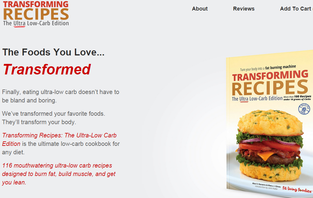 Bread is sometimes referred to as the “staff of life”. There are very few diets worldwide that do not include bread in some way or another, and it is certainly a major part of the Western diet. Taking that into account, it is certainly worth thinking about the part that bread plays in your diet, especially if you are looking to lose weight. For many of us, it is an automatic choice to reach for a white loaf when in the bread aisle at the supermarket. It is low maintenance and no-one seems to actively dislike it. However, it is definitely not as good for you as most of the other options there. White bread is made with very refined flour, and loses the wholegrains which aid digestion and provide nutrition. A good wholemeal granary bread is perfect for sandwiches. Most people truly believe, with some justification, that wholemeal bread actually tastes better than white bread, and the latter is little more than a casing for more interesting foods. The popularity of wholemeal bread for toast is also quite telling – it has greater texture than white bread. Of course, it is not all about sliced loaves. A baguette is a good healthy option and has a lot more texture thanks to its crusty outside. Other options, such as naan or pitta bread may be more well known for their use in international cuisine, but they can be a pleasant and convenient alternative for sandwiches, too. Look for them when you're shopping. 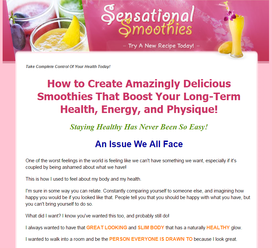 It is impossible to talk for long about healthy eating without calling to mind fruit and vegetables. These are the cornerstone of any healthy diet and are a low-preparation option for a snack on the go. What is more, there is almost infinite variety in the fruit and veg aisle at your supermarket, so there is always something new to try. One of the more popular options for any dieter trying to break the stranglehold that chocolate has on their diet is the banana. Bananas are an excellent snack food, especially if you have a long working day ahead of you. They are packed with potassium, which is excellent for slow release energy, meaning that you can rely on being on point right up until the last tick of the clock. For desserts, a good fruit salad is always a fine option. There are so many possible combinations – you can buy it tinned, but if you want to get the best out of a fruit salad it is ideal to buy the fresh fruit yourself and mix it together. A little bit of chopping is as much preparation as it requires, beyond stirring it lightly to mix it all up. What you put in is up to you, but fresh peaches, pineapple, strawberries and grapes are always popular, as is melon and mango. The humble apple is also an option to be considered. They are low in calories, juicy and what's more, excellent for your teeth. As well as an excellent source of vitamins and minerals, getting a lot of fruit in your diet is easy and fun. 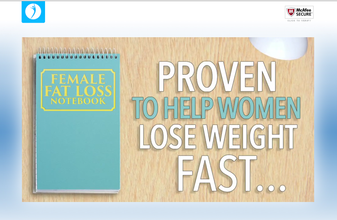 When people go on a diet they often make the mistake of assuming that because they are having to limit what they eat, they will necessarily have to cut out everything that doesn't conform to the “no fat, no frills, no fun” stereotype. This extends to thinking that there can be no more snacking – just three meals a day which must be made out of green stuff. And it could not be further from the truth. You can still snack when you are on a diet. Of course, this does not mean that as long as you eat three healthy meals you can eat whatever you want at any time. Rather, you can eat healthy snacks if you get peckish between meals. Apart from anything else it is a much better alternative than overeating at the next meal and giving your digestive system too much to deal with. Healthy snacks include fresh fruit and nuts, or a slice of crusty bread spread with a healthy margarine and topped with a thin slice of cheese. One of the best and surprisingly healthiest snack options is peanut butter. It can be spread on grain crackers and even enjoyed with a stick of celery If you get hungry between meals, another good option is a bowl of cereal. Obviously, a healthier cereal will be better here – an option containing whole bran, or a bowl of cornflakes is naturally preferable to something chocolatey or coated in honey. It's not too filling and it's not unhealthy, and it takes no time at all to prepare.  The importance of eating healthily is known to us all. Without the right diet, it is hard to live the life we would all like to, keeping energy levels high and being able to do the things we enjoy. However, it is not all about the physical benefits of a healthy diet. Eating the right things can have a beneficial effect on your mental well-being too. The truth is that mental health and physical health are interconnected. If you are eating too little, or too much of the wrong thing, then you are going to suffer mentally for it as well as physically. Your brain requires nourishment every bit as much as your body, and a lack of protein in your diet can result in the onset or aggravation of depression. If you suffer from depression, then one of the main negative effects of the illness is a lack of energy, a situation which affects your ability to fight the condition. Eating the right things is important, and while often depression sufferers will feel that they do not want to eat at all it is important that they make the effort. Rather than eating “comfort food” - which is rarely very comforting – getting some fresh fruit and veg, as well as carbohydrates from pasta or potatoes can help. Drinking plenty of fluid is also important for mental health. Ideally, five glasses or more of water a day will prevent you from becoming dehydrated and depriving your body and mind of the fuel that is so important. Having the energy and the sharpness to send the symptoms of depression packing is essential, and your diet will play a big part in this. 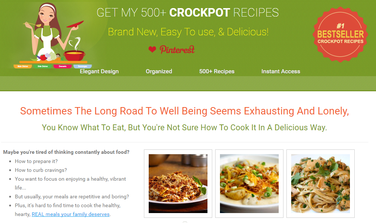
Many people feel that the problem with healthy eating is simply that it is not interesting enough – while salads and vegetables are all well and good, there is little sparkle to them. And while this is a view that is easy to sympathise with, the honest truth is that there are plenty of interesting options if you know where to look. Sometimes all you need is something a little bit different.
Geography, weirdly, is something that has a bearing on typical diets. In many western countries, the climate is cold and rainy, and we are conditioned to eat heavier foods that are not so easily digested – we are expected to have a little more “meat on our bones”. And so conversely, trying cuisine from a hotter climate might be the key. India, for example, is a country where the weather is invariably hot, and spice is a major ingredient in the cuisine of that country. Partly this is because it grows there and is easily affordable, and additionally spice in a diet makes it more readily digestible and doesn't add fat. Good Indian food is a very worthwhile option in a healthy diet. Of course, any food if eaten to excess will cause you to gain weight. But mixing up your diet to give it an international flavour will keep things interesting, give you a range of nutrients which will be good to your body and will get you thinking about food in a different way – which will be beneficial in the long run. 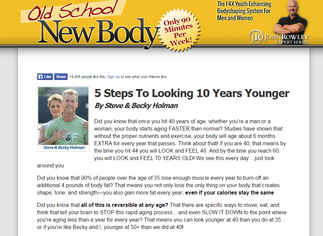 Although it is generally accepted that the only truly reliable way to avoid weight gain is to eat healthily and exercise, the truth is that for many people, this seems like a hell of a grind. It takes a lot of effort, and it can be a while before you see substantial results from it – so taking a short cut becomes more attractive. The most disturbing “alternative” to eating healthily is eating disorders. Most commonly, anorexia is chosen by people who feel that healthy eating still has too many calories involved. Although associated primarily with teenage girls and young women, anorexia is not limited to that section of society. Bulimia, a disorder from the same family as anorexia, is becoming more and more common. Bulimia sufferers will eat where anorexics starve themselves, and will often binge to the point where they are uncomfortably full before inducing vomiting to ensure that food is not digested. While both anorexia and bulimia do allow sufferers to lose weight and keep it off, they carry very real dangers. Although being slim is considered to be the glittering prize by many, it is at a price. If you are not eating the right nutrients, or are purging them through vomiting, it is impossible to keep clear, healthy skin and hair, and your energy levels will go through the floor. It is also unlikely that anorexics or bulimia sufferers will get to a point where they feel thin enough, and many can go to the point of killing themselves through malnutrition.  Fast food is, and will no doubt continue to be, one of the most secure industries in the world. The simple truth of the matter is that sometimes, we look for the quickest option when we are on the move. So it does not appear that fast food will disappear from the high street any time soon. From a healthy eating point of view, the question has to be whether we turn a blind eye to it or find healthy fast food. Does healthy fast food even exist, though? Well, if fast food is a secure industry, then healthy eating is one that compares with it. While many of us need to eat on the move, there are certainly enough people around who don't want to compromise on their healthy eating plan. There are options for healthy fast food, even if we tend not to define it as such. The best fast and healthy option for many of us is a sandwich. Certainly, the number of sandwich chains around the country is testament to how much people enjoy a good sandwich, and the advantage is that sandwiches are readily customizable. Admittedly, not all sandwiches are healthy, but it is up to you how you have them. A chicken salad sandwich on wholemeal with no mayo is certainly healthier than a burger and fries – and the level of variation compared to burgers means that it is a choice that need not get boring. Most sandwich shops also do wraps, pasta salads and other variations too. 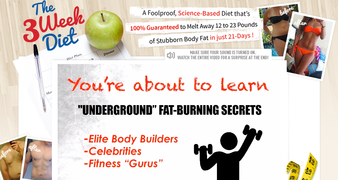 The old cliché that if something is delicious it must be fattening has a lot to answer for. Take any list of favorite foods, and there is little doubt that the majority will be things that are bad for us. We instinctively crave foods that, on balance, are not the best option for us – they are unhealthy, lack nutrition and often they don't really fill our stomachs very well – but we keep going back, for whatever reason. Why DO we crave foods that are bad for us? There is no doubt that there is a certain charm to food that is not particularly healthy. That charm is not always in the way the food tastes. Sometimes it is a convenience thing – if you're at a football game the chances are that the options for a snack do not include a healthy casserole, but will include burgers, hot dogs and various other foods that won't do your waistline a lot of good. Sometimes it can be something as simple as the way a food smells – find someone who doesn't enjoy the smell of fried onions and you may just have found alien life. As often as not, we just crave the unhealthy food because it is simple. We're used to it, we don't need to sit down to eat it or pair it with just the right side dish. It's easy and it tastes good. What we need to do is to get to the point where we find a healthy option to be just as hassle-free. For many people, the best option in this case is a sandwich – just as long as there is not too much butter on it, anyway!  How many times have you had the following conversation? You're trying to persuade someone to do something, and they say “No, I don't like that”. You ask them how many times they have actually done that thing and they eventually admit they never have, but still maintain that they know they wouldn't like it. That is the way that many of us behave when it comes to food, and especially healthy food. The bare fact about eating healthily is that it involves expanding your range a little. Many of us will bellyache about trying a new food because we like what we are used to. The things that we have eaten for years were new to us once too, and the issue is one of being set in our ways. If you try something new every once in a while, you can become better acquainted with variety, and pick the new things that you really like. There is no point in banging your head against a brick wall trying to develop a taste for something you know you do not like. However, you'll never know if you like something until you actually try it. This is particularly true of international cuisine. It may look different, but millions of people eat it regularly, so it can hardly be poisonous. Taking a leap of faith and trying a different food is not going to be the death of you, so why not try something different once a week and surprise yourself with how much you enjoy it? 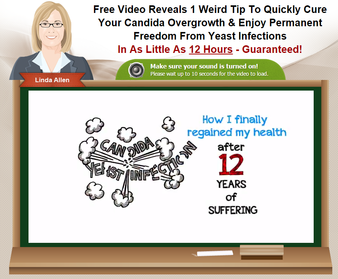 Often getting a healthier diet is not just about what you are eating, but how much of it. For example, there is no real reason to stop eating foods like pasta or cheese – but a mound that fills the plate is always going to be unhealthy. Many of us make the mistake of eating until it is uncomfortable to eat more. This is never going to work out well because we go on eating after we are satisfied and all of a sudden we have overloaded our digestive system. The digestive system is not like a muscle, that will get more powerful with every workout. We need enzymes to digest food, and when they are overworked it causes a deficiency. In this respect, eating healthily can be as much a matter of making small changes as doing anything radical. Even a seemingly cosmetic change like using smaller plates can be helpful. We are conditioned to think that empty space on a plate is a bad thing. All that really matters is how we feel after eating. If after a meal you don't feel hungry, then the meal has done its job. In France, a country with less of an obesity problem with most, the diet is far from boring. The major difference between there and many English-speaking countries is that they eat less food at a sitting. The French do not eat until they can eat no more – rather they eat until they have eaten enough, and enjoy the food for its taste. In this respect, there is a lot we can learn from them. 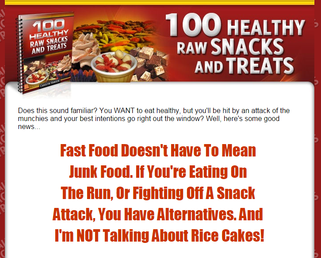 Healthy eating is not something that necessarily follows an easy pattern. It would be great if we could simply flick a switch and change our habits to make our diet healthier, but as we have free will and free choice, we will always be tempted to do something that may hurt us long-term. This means that we are reluctant to make a huge change – what if it fails, and we have gone to so much effort for something to fall apart? Instead of making one big change, there is a lot to be said for starting small and making several little changes that will be easier to maintain. Those smaller changes may seem to be nothing, but they add up. When you get up tomorrow morning and you have a choice between bacon and eggs and toast and cereal, think about what your body actually wants – there are more nutrients in the latter, and they won't cause a mid-morning crash. When you are offered “fries with that” if you go for a burger, say “no thanks” and enjoy a small treat that doesn't cause you to feel like you've transgressed. When you are asked how you would like your eggs, don't say “fried” or “I like mine with a kiss”. The latter is bad for you and the second isn't funny. Try having them scrambled or poached – in all honesty there is more taste and less fat from having them this way. Small changes like this soon add up.  Few of us can really say that we would not enjoy the chance to eat in a good restaurant more often, and there is no reason that we should turn our backs on restaurant eating once we go on a diet. However, the truth of the matter is that eating in a restaurant is not a risk because there are no healthy options or even that they are limited, but that we know so little about the healthy option. When we take care of the cooking of food ourselves, we know exactly what is going into it and how it is being prepared. In a restaurant we leave it up to the chef. When you look over the menu in a restaurant, it is a good idea to have a healthy option or two in mind, and then ask the waiter when ordering how exactly the food is prepared. Different restaurants will have different policies for how the food is cooked. Sauteed vegetables are usually healthy and delicious, but the difference between frying them in vegetable oil and fat is quite marked. Asking a few questions before committing to an order is never a bad idea, as long as you are polite and reasonable in doing so. There may be some concern that the serving staff will lie to you or tell you what they think you want to hear in order to make you pipe down and order – but if you are reasonable and polite to them, they will be likely to reciprocate, and take on board your specifications on how you would like something to be cooked. 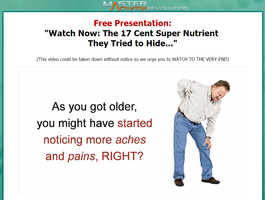 If eating healthily was as easy as it should be, then the diet industry – books, DVDs, diet plans themselves and exercise equipment – would be in the doldrums. The fact that it is thriving to this day is a sign that, as much as we would like to think it, dieting is not easy or straightforward. We like to think of pasta as being the healthy option – many of us will replace fries with a serving of pasta when we are trying to lose weight – but unless we are careful, we can end up gaining more weight for the addition of pasta to our diet. A lot of it comes down to what we eat with that pasta. In some cases it is a thick, creamy sauce or a salad dressing that contains a bunch of calories. And even plain pasta can be a weight gain nightmare if we don't get the exercise to work off those carbs. Very often it is not what we eat but how we cook it that is the issue. Many of us will, for example, quite enjoy a nice steak every once in a while – as long as the fat is trimmed. But how we cook it affects how good it is for us. If you are frying it in oil or butter, then it will become unhealthy very quickly. If, however, you grill it or sear it in a pan, there is certainly no harm to enjoying it. One of the most enjoyable quick meals is a chicken breast with baby potatoes. Now, boiled potatoes can hardly be a diet destroyer, can they? Again, it depends what is done with them. If they are tipped out of the pan and have a mound of butter melted over them, they're as much a risk as fries. If they are drizzled with a little olive oil, then they're more than fine. 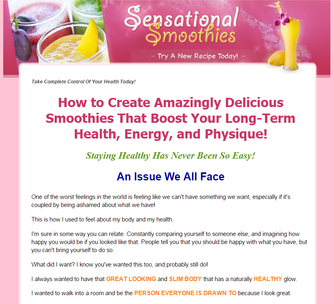 It is not at all uncommon to meet a person who cannot understand why they are unable to lose weight, and curses the fact that although they are eating all the right things, their weight hangs around the “few pounds overweight” barrier. They will tell you all of this and wonder what they are doing wrong, and in the next few moments will take a gulp from a can of soda, a glass of beer or something similar, and admit on questioning that it is their third of the day or night. Now, it is far from impossible to maintain a healthy diet while continuing to enjoy the occasional glass of wine or can of soda. Neither is it unthinkable to stop drinking these things entirely, but it is not compulsory. However, it is important to realize that issues with weight gain or weight loss can often be down to what you drink as much as what you eat. You will not be at a healthy weight if you drink a bottle of wine a day, or get through a family-sized bottle of soda. If you have to have a drink with food, then often a glass of water will be the best option. There are more reasons for this than just the weight issue. A glass of water will keep you from getting thirsty and will help you enjoy the meal, but will not interfere with the taste. And if you are thirsty, a glass of water is the best thing you can drink – it replenishes the body's hydration levels and allows you to enjoy the occasional glass of wine or soda more, because you get to really savor the taste. 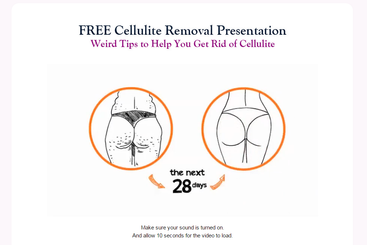 When people embark upon a diet, they are often given to mention that the big test for them will be how much they miss a certain food. For a diet to be effective it needs to be stuck to – often to the extent that people who have lost weight on a diet put it all back on in weeks once they revert to their old ways. So it can be hard to stick to a diet if you tell yourself that it's over between you and your favorite chocolate bar, or that you can never again eat cheese. If a crash diet is required for health reasons, it must be stuck to. But if you simply want to lose weight and keep it off for your own reasons, the best way of sticking to a diet may be to allow yourself to relax it at certain points. If you eat chocolate every day, and often several times a day, then you're not going to lose weight. But only a diet fascist will say that the occasional bar as a treat is off limits. This is not to say that you can carry on eating chocolate as regularly as you wish, or having fried food every few days. For a diet to mean anything, the healthy options have to be the norm. However, a small treat once or twice a week as a reward for sticking to the diet is not going to be the end of the world – and it can enable you to keep to that diet indefinitely, aiding you to lose weight in the long run, which is what you want.  There has for some time been an impression that healthy food is tasteless, boring and even off-putting. We all know that a salad is better for us than a hamburger, but we go for the burger because it has more taste – or so goes the theory, anyway. But there is no reason that this needs to be the case. With the addition of a little spice, any food can become more interesting. There will always be people keen to point out that, although a grilled chicken breast may contain fewer calories than a family bucket from a fried chicken outlet, it doesn't taste as good. And while this is a matter of opinion, the fact of the matter is that perceptions matter. If you marinade that chicken breast with herbs and spices, though, the taste can change considerably, and be a lot more fun. You may get bored with eating tuna salad in your sandwiches, even though tuna is far from tasteless. But if you add a little spice when you make the tuna mix you will find that there are a range of different tastes that add very little if anything in the way of calories. Paprika, pepper, cayenne... the list goes on. The addition of some chopped jalapenos can make it even more interesting, if you have the stomach for them. And these days, the bottles of sauce on the supermarket shelves goes beyond steak sauce and ketchup – additions like piri-piri and teriyaki are a welcome break from the norm. |
Archives
March 2018
AboutThe world is a whole, with humans as part of the picture. Categories |
|
|
OTHER GREAT SITES
Please be sure to visit these other great sites! Become a Homeowner – Find out how Save Energy New Jersey FREE Secrets of the Indigenous Way On Line Shopping for the Coolest Stuff - Turkey Tale Trading Post Learn How to Make Money Selling your Pictures Let your Talents Shine Bright like a Light Native American Advancement Corp Main Page Up Close and Personal with a Nanticoke Lenni-Lenape YouTube Copyright © 2023 Native American Advancement Co, LLC. All rights reserved.
|
As an Amazon Associate I earn from qualifying Purchases. All Amazon links are "paid links"
Affiliate Disclaimer: Some of the links on this site are “affiliate links.” This means we may garner a small commission at no cost to you if you choose to make purchase or use their services. These small commissions help support the costs to maintain this website. Read our full Affiliate Disclosure Statement for more information. Click Here.


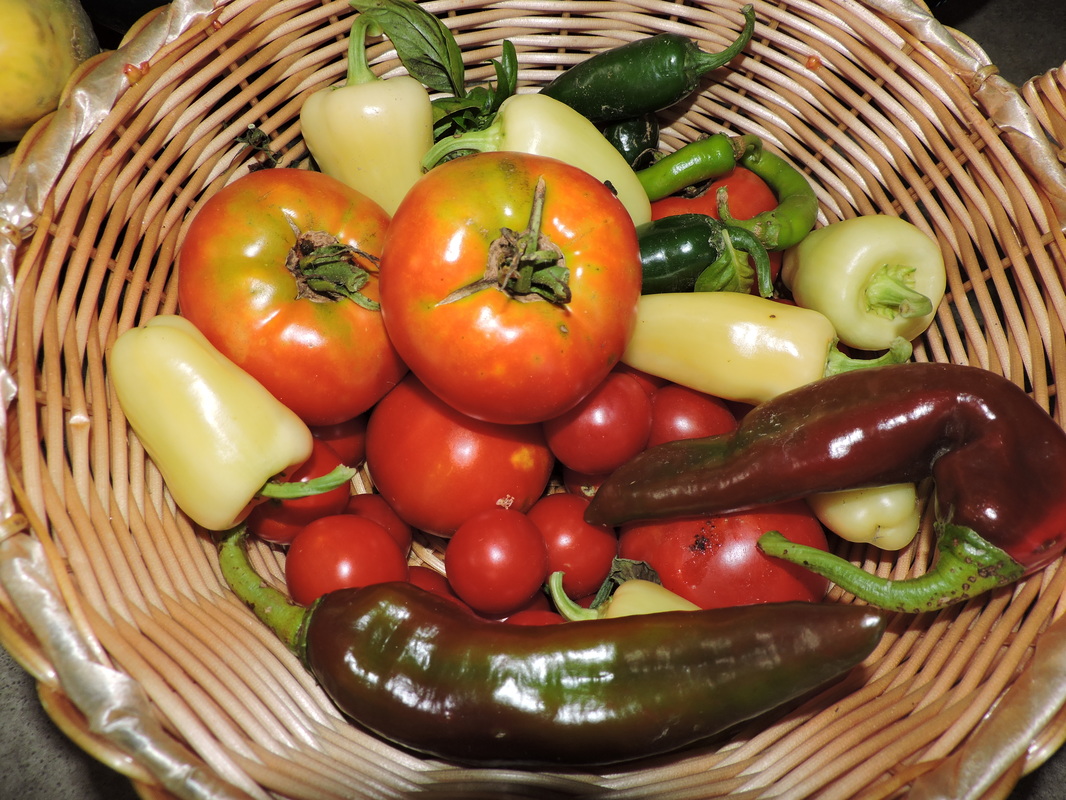

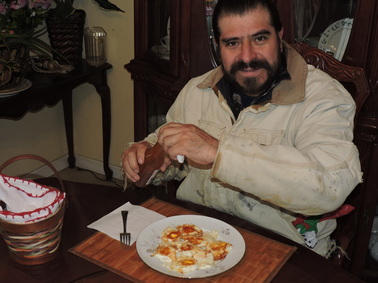

 RSS Feed
RSS Feed

